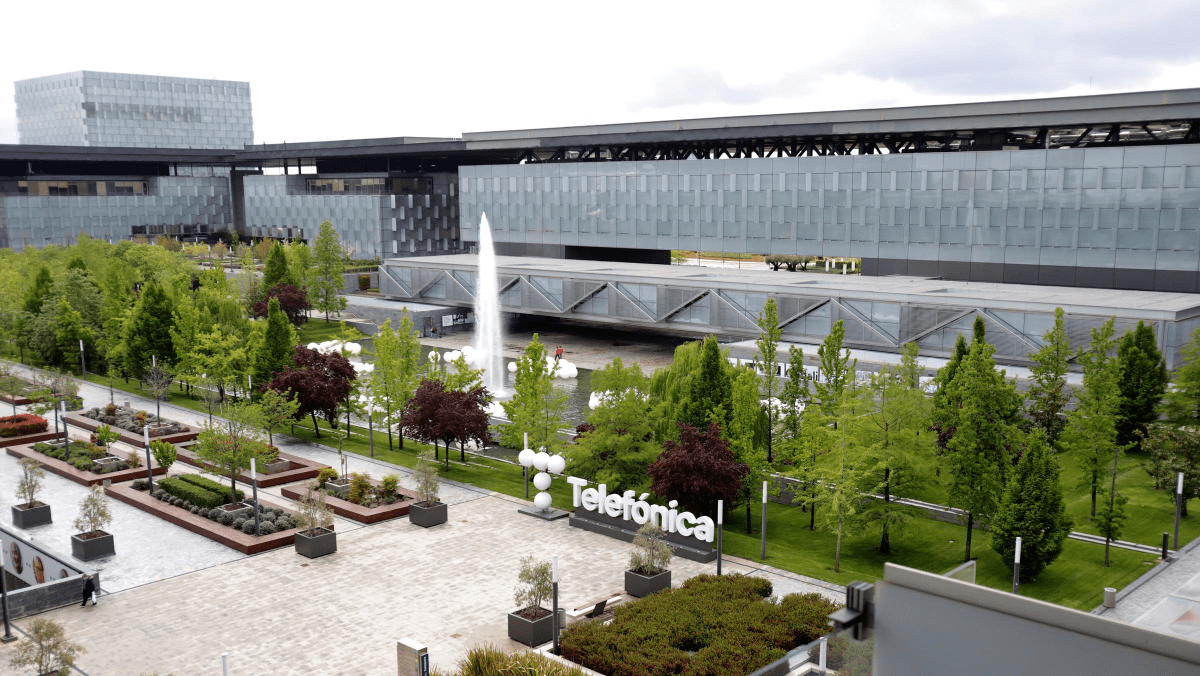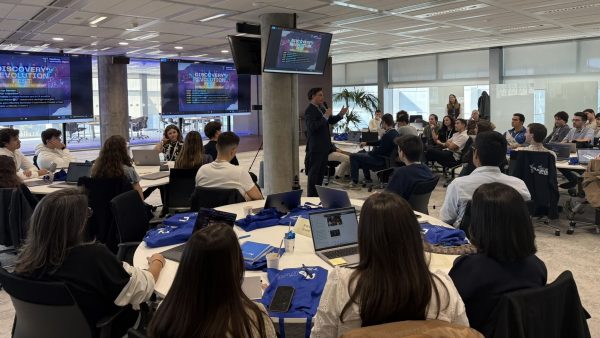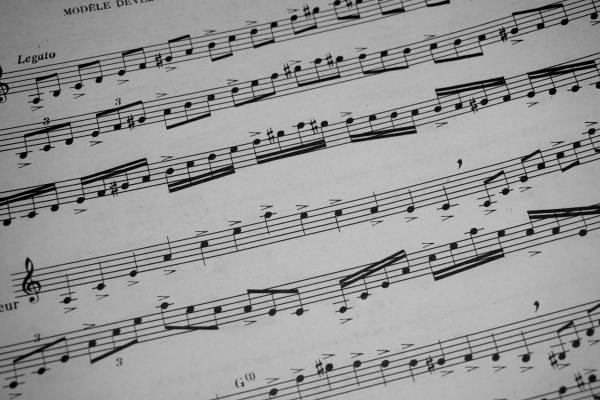More than twenty years have passed since Juan Muñoz’s untimely death and the relevance of his legacy remains relevant. His work reflects on space, with the representation of the human figure at its centre. He stresses the importance of the relationship between work, space and spectator, highlighting his figures of incommunication.
His biography and curiosities about the artist
Juan Muñoz’s career brings together a large number of curiosities:
He was born in Madrid, in a very creative family with seven siblings. And already at a very early age he shows himself to be a child of great sensitivity and an observant character. His first moments at school are not very successful, but he does have a tutor, a poet and art critic, who has an important impact on his education.
Between 1979 and 1981, he moved to London, studied at the Central School of Art and Design, and did a postgraduate degree at the Croydon School of Art and Technology. In 1982, with a Fullbright scholarship from the Spanish-American Joint Committee, he studied at the Prattt Graphic Center in New York.
Before devoting himself completely to artistic creation, he combined it with other disciplines: journalism, exhibition curator, among others with Carmen Giménez, who was the most international Spanish curator at the time, a time when he met the artist Richard Serra. And also with writing, which accompanied him throughout his production. He always wanted to tell stories.
In 1984, at the age of 31, she had her first solo exhibition at the Fernando Vijande gallery, which was key to her international exhibition career.
In 2000 he was awarded the Premio Nacional de Artes Plásticas. And in 2001, the sculptor was the first Spanish artist to exhibit in the Turbine Hall of the Tate Modern (London), with his work ‘Doble Bind’. This installation was part of the ‘Unilever Series’, proposals in which contemporary artists were invited to perform in this colossal space. Juan Muñoz is the second artist to participate after the artist Louise Bourgeois.
A great challenge, his latest creation and what is considered his masterpiece. The last great story. A two-dimensional stage, segmented in two heights to create different layers of experience. It accommodates the artist’s great capacity for illusionism, with the difficulty of making sense of it without overloading it. On the lower level, he creates a dark atmosphere, through which viewers can circulate and observe, on the upper level, spaces with architectural elements and human figures appearing. The title of the piece Doble Bind is the two lifts, above and below.
Shortly after the presentation of this installation, the artist died.
We have recently been able to enjoy the work of Juan Muñoz in the exhibitions held at the Museo Patio Herreriano (Valladolid): Tres imágenes o cuatro, at the Sala Alcalá 31 (Madrid): Todo lo que veo me sobrevivirá and at the Museo CA2M (Madrid): En la hora violeta.
His work in the Telefónica collection: chino rubtándose las manos (Chinese rubbing his hands)
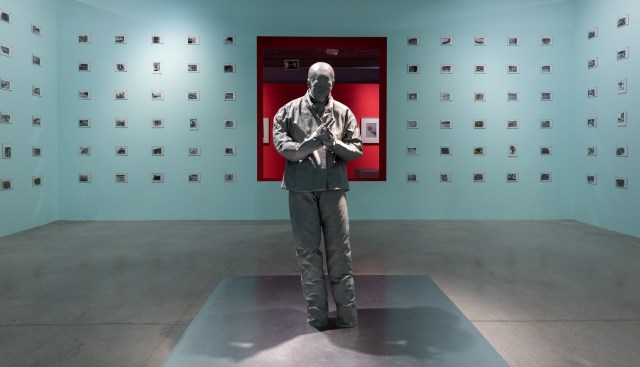
This piece presents many of the interests of the artist’s production. For Juan Muñoz, sculpture is a beautiful craft, a craft of free men, close to music, close to the craft of poets. It has the potential to be a great emotion, to construct a language of emotions.
The figure is theatrical, disturbing, enigmatic: why is he laughing? why the realism of his clothes? why the gesture of his hands? why can’t you see his feet? why those shades of grey? why a scale representation? why is he alone? why does he make me feel uncomfortable? Each person will be able to answer these questions according to their own emotions as a spectator and participant when contemplating it.
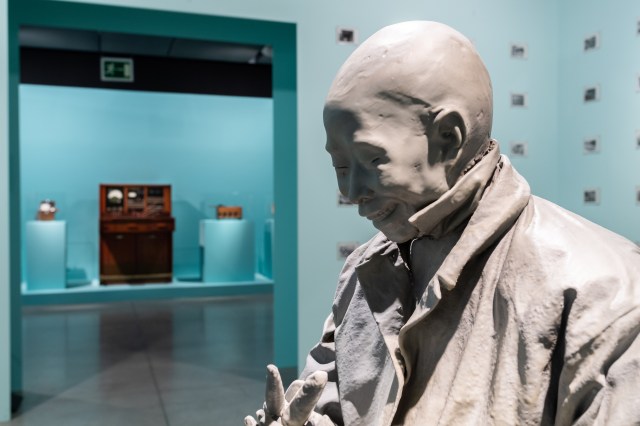
And what would happen if the work were placed in dialogue with other works of art?
This question was answered by the exhibition held at the Fundación Telefónica: Connections in the Telefónica Collection in 2022. An encounter between pieces from the Telefónica Collection, connecting the three blocks of the collection: art, technological heritage and historical archive. An encounter between tradition and innovation.
